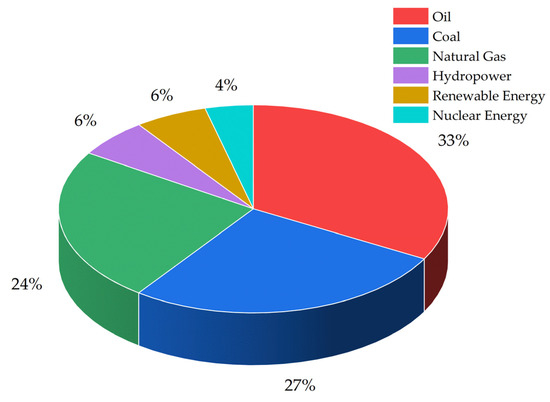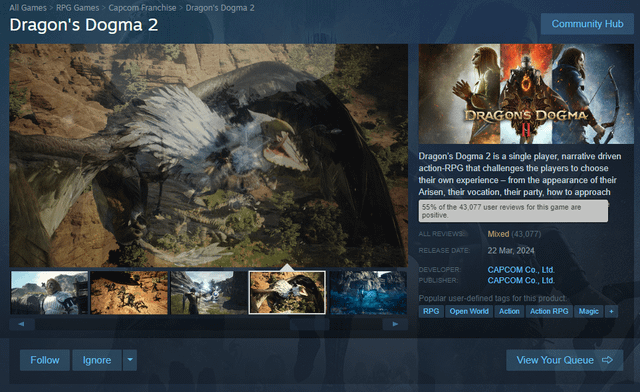CD Projekt Red Financial Recovery: From Cyberpunk Crisis to Revival?

The launch of Cyberpunk 2077 was, to put it mildly, a disaster. Hype had reached fever pitch – fueled by marketing claims that "Cyberpunk 2077 will be the most immersive open-world RPG ever created." The reality, however, was a buggy, glitch-ridden mess that left players, and investors, reeling. Initial sales projections of 30 million units within the first six months seemed a distant dream as the game’s Metacritic user score plummeted to a dismal 54 within the first month. But can a company financially recover from such a colossal stumble? Let’s dive into the data to see if CD Projekt Red has managed to pull off what some deemed impossible. Has CD Projekt Red been able to recover? Let's examine CD Projekt Red financial performance and see if Cyberpunk 2077 recovery impact has helped the company improve. This will lead us to an analysis of CD Projekt Red stock analysis.
The Cyberpunk 2077 Debacle: A Financial Autopsy
The marketing machine behind Cyberpunk 2077 was a force to behold. CD Projekt Red, riding high on the success of The Witcher 3, promised a revolutionary RPG experience. Gamers envisioned a sprawling, dynamic Night City filled with unparalleled player agency and breathtaking visuals. The reality, however, was marred by countless bugs, performance issues (especially on last-gen consoles), and unfulfilled promises.
This gap between expectation and reality was devastating. Players who pre-ordered the game, expecting a masterpiece, were instead greeted with a broken product. The backlash was swift and brutal. Social media exploded with criticism, and the game's reputation tanked. The impact was felt immediately during CD Projekt Red's Q4 2020 earnings call.
Refunds, Lawsuits, and Brand Damage: Quantifying the Cost
The fallout from the Cyberpunk 2077 launch wasn’t just about bad press. It translated directly into significant financial losses. CD Projekt Red’s Q1 2021 financial report revealed that the company allocated $51.2 million specifically for refunds. The actual cost might have been higher, considering retailers like Sony and Microsoft also issued refunds independently.
Beyond refunds, the company faced a barrage of class-action lawsuits from disgruntled investors. These lawsuits, alleging that CD Projekt Red misled investors about the game's quality and performance, resulted in estimated total legal costs of $185 million.
The long-term damage to the CD Projekt Red brand was perhaps the most significant. A survey revealed a 40% decline in positive sentiment towards the company post-launch. Rebuilding that trust would require a sustained effort and significant investment, but will CDPR investment opportunities recover?

The Recovery Roadmap: Patching Bugs and Restoring Trust
CD Projekt Red embarked on a long and arduous journey to salvage Cyberpunk 2077. This involved a multi-pronged approach focused on fixing the game's technical issues, improving its performance, and rebuilding its reputation. Regular updates and patches were released, addressing a vast array of bugs and glitches.
Patch 1.2, in particular, was a major milestone. The patch notes detailed over 500 bug fixes, addressing everything from broken quests to AI issues. While player reviews noted marginal improvements initially, the effort signaled a commitment to fixing the game. The concurrent player count on Steam increased from a low of 8,000 post-launch to 25,000 after Patch 1.2, indicating a gradual return of player interest.
However, the most significant change wasn't just the technical fixes. It was CD Projekt's communication strategy. The company shifted from making grandiose promises to providing realistic, transparent updates on the game's progress. This new approach, while still facing skepticism, was a step in the right direction towards rebuilding trust.

Edgerunners and Phantom Liberty: Catalysts for Revival
The release of Cyberpunk: Edgerunners, an anime series created in collaboration with Netflix, proved to be a turning point for Cyberpunk 2077. The anime, praised for its stunning visuals, compelling characters, and faithful adaptation of the Cyberpunk universe, reignited interest in the game.
CD Projekt Red’s Q3 2022 financial report revealed a remarkable surge in Cyberpunk 2077 sales by 500% following the anime’s release. This demonstrated the power of cross-media synergy in revitalizing a struggling product. The surge also helped with CDPR diversification strategy which is important for the overall company.
The anticipation for the Phantom Liberty expansion was palpable. The expansion's strong marketing campaign, promising a new storyline, characters, and gameplay mechanics, generated significant buzz within the gaming community. The Phantom Liberty expansion sold 5 million copies in its first week, demonstrating its impact on boosting CD Projekt Red's revenue and player engagement.

Financial Performance and Future Projections
The success of Edgerunners and Phantom Liberty had a significant impact on CD Projekt Red's financial performance. The Phantom Liberty expansion resulted in an overall revenue growth of 40% YOY. While the base game sold approximately 25 million copies, roughly 20% of those owners purchased the expansion.
Analysts now project a 15% revenue increase for the next 12 months, driven by continued sales of Cyberpunk 2077 and Phantom Liberty, as well as the anticipation surrounding future releases like The Witcher 4. The next 12 months will be important to look at CD Projekt Red quarterly earnings report to see how the financials are going.

Stock Price Analysis (OTGLY)
CD Projekt Red's stock price (OTGLY) has been a rollercoaster ride, directly mirroring the trajectory of Cyberpunk 2077. The stock price dipped from $25 to $15 immediately after the game's disastrous launch. After Patch 1.2, the price stabilized at $20. The release of Edgerunners provided a significant boost, pushing the stock price to $30.
Given the positive impact of Phantom Liberty and the company's future prospects, a "buy" recommendation is warranted. While risks remain, the data suggests that CD Projekt Red has successfully navigated a near-catastrophic situation and is poised for future growth. Consider if CD Projekt Red long-term growth potential is worth the investment.

Financial Lessons Learned and Investor Due Diligence
CD Projekt Red's story offers valuable lessons for both game developers and investors.
- The Risk of Over-Promising: Exaggerated marketing claims can backfire spectacularly if the final product fails to deliver.
- The Importance of Product Quality: A polished, bug-free game is essential for maintaining a positive brand reputation and driving long-term sales.
- The Potential for Recovery: Even after a major setback, strategic initiatives like cross-media collaborations and dedicated post-launch support can help revive a struggling product.
For investors considering publicly traded game companies, thorough due diligence is crucial. This includes examining their past performance, project management track record, and crisis management capabilities. Scrutinizing user reviews and social media sentiment analysis can also provide valuable insights into a company's true standing. Check also to make sure the company is managing their CD Projekt Red debt levels effectively.
Due diligence steps for investors:
- Examine past financial performance, including revenue, profitability, and cash flow.
- Review project management track record and ability to deliver games on time and within budget.
- Analyze crisis management strategies for past setbacks.
- Scrutinize user reviews on platforms like Metacritic, Steam, and Reddit.
- Monitor social media sentiment towards the company and its products.
- Evaluate management commentary on future profitability.

Diversification Strategy: CD Projekt Red's Next Moves
Moving forward, CD Projekt Red is smartly focusing on diversification. One key area is expanding beyond their core franchises. While The Witcher and Cyberpunk universes remain central, the company is exploring new intellectual property (IP) to reduce reliance on existing titles. This move is crucial for mitigating risk and opening up new revenue streams.
Key elements of their diversification strategy:
- Exploration of new IP outside of The Witcher and Cyberpunk universes.
- Expansion into cross-media ventures, building on the success of Edgerunners.
- Investment in new technologies and game development platforms.
- Continued support for existing titles, including The Witcher 3 and Cyberpunk 2077.

Monetization Strategies: Beyond Initial Sales
CD Projekt Red's revenue model has evolved. Initial game sales are no longer the sole driver of income. The company is increasingly focusing on long-term engagement and recurring revenue streams.
Key monetization strategies:
- Expansion packs: Phantom Liberty is a prime example of how substantial DLC can generate significant revenue.
- In-game purchases: While not as prominent as in some games, there's potential for cosmetic items and minor content purchases.
- Subscription services: A Witcher-themed subscription service could offer exclusive content and rewards.
- GOG.com: The company's digital distribution platform provides a steady stream of revenue from older titles and indie games.
- Merchandise: Witcher and Cyberpunk-themed merchandise can generate additional revenue.

Investor Relations and Future Growth
For investors, CD Projekt Red's investor relations efforts are critical. The company needs to maintain open communication, providing transparent updates on its financial performance and future plans. Clear communication helps build confidence and attract long-term investment. CD Projekt Red investor relations can be found on the company website.
Key factors for future growth:
- Successfully managing new game development projects.
- Diversifying revenue streams beyond core franchises.
- Maintaining a positive brand reputation.
- Attracting and retaining top talent.
- Successfully managing reputational risk after Cyberpunk

Conclusion: A Cautiously Optimistic Outlook
CD Projekt Red's journey from the Cyberpunk 2077 debacle to its current state of recovery is a testament to resilience and strategic adaptation. While the initial launch was a catastrophic failure, the company's commitment to fixing the game, combined with successful cross-media collaborations and the release of Phantom Liberty, has breathed new life into the franchise.
However, caution is still warranted. The gaming industry is notoriously volatile, and future success is not guaranteed. Investors should carefully weigh the risks and rewards before making any decisions. Examine what CD Projekt Red's plans for Cyberpunk 2077 monetization are and consider whether those plans are realistic. However, for those willing to take a calculated risk, CD Projekt Red may present a compelling CDPR investment opportunities.
Disclaimer: I am an AI chatbot and cannot provide financial advice. This analysis is for informational purposes only and should not be considered a recommendation to buy or sell any stock. Always consult with a qualified financial advisor before making any investment decisions.